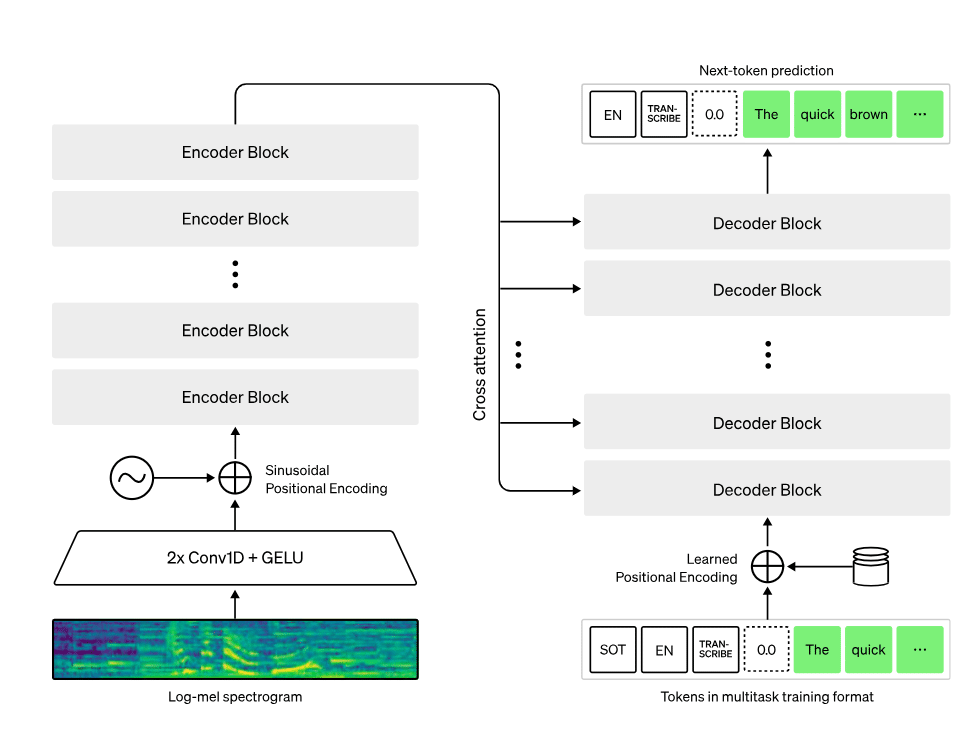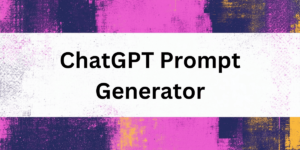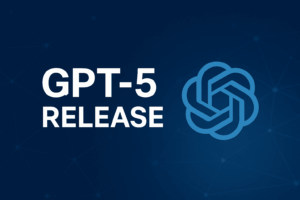Transcription can be a tedious task, but it doesn’t have to be. With the advancement of technology, there are now tools available that make converting speech to text much easier and more accurate than ever before. One such tool is Whisper OpenAI. This state-of-the-art software is designed to provide users with an effortless way to transcribe audio files into written text. Whether you’re a journalist, researcher, or simply looking for an easy way to take notes during meetings, Whisper OpenAI has got you covered. In this blog section, we’ll explore the features of Whisper OpenAI and how it can help you achieve accurate and efficient transcription in no time.
1. Introducing to Whisper OpenAI
Whisper OpenAI is a cutting-edge technology that paves the way for accurately converting speech to text. While traditional speech recognition software only recognized spoken words, Whisper OpenAI uses advanced machine learning techniques to understand the context and nuances of the spoken language.

This means it can transcribe more accurately and quickly than other software. Whisper OpenAI is open-source so that data scientists and developers can modify and use the API for transcription, translation, and other machine learning tasks using audio data. Before using Whisper OpenAI, it’s essential to understand the basics and have an idea of how it works. Once installed and imported, you can use the API to create your models or use pre-built ones.
There are several things you can do to optimize your content and improve your speech transcription using Whisper OpenAI, but you must be aware of the typical challenges associated with speech recognition.
2. How does Whisper AI works
Whisper is a state-of-the-art automatic speech recognition (ASR) system that has been trained on an extensive and varied dataset of 680,000 hours of multilingual and multitask supervised data obtained from the internet. The research indicates that utilizing such a vast and diverse collection leads to enhanced resilience against accents, ambient noise disturbances as well as technical jargon.
Additionally, it facilitates transcription in several languages while also allowing for translation into English from those tongues. We are releasing our models along with inference code under open-source licensing terms so they can serve as building blocks towards creating practical applications or furthering investigations pertaining to robust speech processing techniques.

However, with Whisper OpenAI, you can convert speech to text efficiently and accurately and leave more time for productive work. With the growing importance of voice-enabled devices, Whisper OpenAI is a must-have tool for anyone who wants to get ahead in the field of voice recognition.
As they mention on the official paper published by OpenAI:
Whisper suggests that scaling weakly supervised pretraining has been underappreciated so far in speech recognition research. We achieve our results without the need for the self-supervision and self-training techniques that have been a mainstay of recent large-scale speech recognition work and demonstrate how simply training on a large and diverse supervised dataset and focusing on zero-shot transfer can significantly improve the robustness of a speech recognition system.
3. Benefits of Converting Speech to Text with Whisper OpenAI
Converting speech to text has numerous benefits, especially if you want to streamline your workflow and save time. With the advanced capabilities of Whisper OpenAI, transcribing your audio files has never been this easy. By using Whisper OpenAI, you can make use of an incredibly powerful speech recognition API without worrying about the complexity of transcription.
You can easily import your data sets and audio files into the program and let it do the heavy lifting. Whisper OpenAI uses state-of-the-art machine learning models to accurately transcribe your speech into text and even translates it into different languages. The accuracy of the transcription is incredibly high, making it perfect for creating subtitles, captions, and transcripts for your online videos and podcasts

As they mention on OpenAI site, the Whisper architecture is a straightforward and comprehensive solution that employs an encoder-decoder Transformer. The audio input undergoes segmentation into 30-second intervals, followed by conversion to log-Mel spectrogram before being fed into the encoding module. With specialized tokens integrated with text captions, the decoder can accomplish various tasks such as language identification, phrase-level timestamps determination, multilingual speech transcription and translation of non-English speeches to English texts within one model framework.

4. Understanding the Basics of Whisper OpenAI
One of the significant selling points of Whisper Open AI is its ability to process language recognition in multiple languages. The software uses machine learning models to transcribe your audio data accurately. The use of advanced technologies like deep learning has made Whisper OpenAI stand out in the market.
To use Whisper OpenAI, you first have to install the software, and then import your dataset. The software is designed to convert speech to text in a hassle-free manner. Whisper Open AI’s API enables it to work on multiple platforms, making it accessible to everyone. The accuracy of Whisper OpenAI models is exceptional, making it ideal for transcribing without having to worry about prolonged editing. The ability to transcribe speech in real-time sets Whisper Open AI apart from other transcribing software. Understanding and using Whisper Open AI can enhance your productivity and make executing your tasks a lot easier.
Detailed Data about Whisper OpenAI
- After undergoing rigorous training, the model has been equipped with a vast knowledge base of 680k hours worth of audio and text data.
- This comprehensive dataset spans across three levels including multilingual speech recognition (17%)
- Translation data (18%)
- English speech recognition (65%).
- It boats an impressive collection of X→en translation records amounting to 125,000 hours.
5. Steps for Using Whisper OpenAI to Convert Speech to Text
Using Whisper OpenAI to convert speech to text is a straightforward process.
First, you need to install the package and import the necessary libraries. You also need to collect your audio data or use a pre-existing dataset for the language model you want to use.
To utilize Whisper, it is necessary to have Python3.7+ and an up-to-date edition of PyTorch (we employed version 1.12.1 without any complications). In case you do not possess these prerequisites yet, kindly proceed with the installation process for both Python and PyTorch at present.
Additionally, FFmpeg – a library utilized for audio processing – must be installed in order to operate Whisper effectively on your device. If this software has not already been integrated into your system’s framework, please select one of the following commands below to initiate its installation procedure.
Which model to choose
Whisper provides a range of five language models that vary in size and accuracy, with larger models exhibiting superior precision. However, the hardware requirements also increase proportionally to model size.
- Tiny.
- Base.
- Small.
- Medium.
- Large.

Once everything is set up, you can use the API to transcribe your audio. Whisper OpenAI does not only transcribe speech to text, but it also provides translation services. However, keep in mind that the quality of the transcription depends on the quality of the input audio, background noise, and the language model being used. To ensure accurate transcription, it’s recommended to use clear audio recordings and select a language model that is designed for the language being spoken. Overall, Whisper OpenAI significantly simplifies the process of transcribing speech to text and provides efficient and accurate results.
Find out more details about how does whisper work, here.
6. Tips for Optimizing Your Content with Whisper
When it comes to optimizing your content with Whisper OpenAI, there are a few tips that can really make a difference. By following these tips, you’ll be well on your way to optimizing your content with Whisper OpenAI and achieving the best possible results:
1. Use Whisper OpenAI to generate creative writing prompts for your next project.
2. Train the model on a specific topic or theme to generate more relevant responses.
3. Experiment with different temperature values to adjust the level of randomness in the generated text.
4. Use the “top_k” parameter to limit the number of words that can be selected from the model’s output.
5. Incorporate generated text into your social media posts or marketing materials for a unique twist.
6. Use Whisper OpenAI as a tool for brainstorming and generating new ideas.
7. Combine multiple generated texts to create longer pieces of content, such as articles or essays.
8. Experiment with different input formats, such as images or audio recordings, to see how the model responds.
9. Fine-tune the model on your own data for even more personalized results.
10. Collaborate with others by sharing generated texts and building off each other’s ideas.
Frequently asked questions
Is OpenAI's Whisper free?
OpenAI’s Whisper is not free. It is a subscription-based service that requires users to pay a fee to access its features. The cost of using Whisper varies depending on the level of service and access required.
Whisper is a platform that allows users to train and deploy models for natural language processing, allowing for more efficient text processing and analysis. The service offers a range of features, including pre-built models and the ability to customise models.
While Whisper is not free, OpenAI does offer a free trial period for new users, which allows them to test the service and its features before committing to a subscription.
Can I use Whisper AI?
Yes, you can use Whisper AI. Whisper AI is an artificial intelligence technology designed to help users make informed decisions in various areas of their lives. It can be used by individuals, businesses, and organizations to gain insightful information about customer behaviour, market trends, and industry insights.
The technology uses predictive analytics and machine learning to analyze data in real-time, providing users with accurate and actionable insights. It can be integrated into existing systems using APIs, making it easy to use and integrate into different platforms.
Whisper AI can be used in various industries, including healthcare, finance, retail, and marketing. It can help businesses reduce costs and increase profitability by providing insights into customer behaviour and market trends.
To use Whisper AI, users need to have access to the technology platform. They can sign up for a trial or paid subscription to access the technology. The platform is easy to use, with a user-friendly interface that provides insights in an easy-to-understand format.
What is Whisper AI tool?
Whisper AI is an innovative tool designed to analyze and optimize social media campaigns. It is a powerful software that harnesses the power of artificial intelligence to help marketers improve the effectiveness of their social media marketing strategies.
The tool analyzes social media data in real-time, providing insights and recommendations on how to optimize various aspects of a campaign, such as targeting, messaging, and timing. It also offers personalized recommendations based on audience behavior and trends, helping users to reach their target audience more effectively.
One of the key advantages of Whisper AI is its ability to identify and segment the audience into different groups, based on various criteria such as age, gender, location, interests, and more. This allows marketers to tailor their messaging to specific groups, increasing the relevance and engagement of their content.
What is the Whisper model for speech recognition?
The Whisper model is a type of speech recognition model that is specifically designed for use in noisy environments. It is a type of deep neural network that is able to effectively filter out background noise and enhance speech signals.
The Whisper model is a modification of the traditional automatic speech recognition (ASR) model. It incorporates a number of modifications that allow it to effectively handle noisy input signals. One of these modifications is the use of long short-term memory (LSTM) cells, which are able to capture long-range dependencies in the speech signal.
Another important feature of the Whisper model is the use of noise-aware training. During this process, the model is exposed to speech signals that are corrupted by various levels of noise. This allows it to adapt to different levels of noise and improve its ability to recognize speech in noisy environments.
Conclusion
In conclusion, Whisper OpenAI is a game-changer when it comes to speech-to-text conversion. Its advanced machine learning models and powerful language recognition capabilities make it easier and more efficient to transcribe audio data into written text. With its simple import and installation process and user-friendly API, Whisper OpenAI can be easily integrated into your workflow.
By following the five steps outlined above and utilizing our tips for optimizing your content, you can ensure accurate and high-quality transcriptions. However, it’s important to note that challenges are bound to arise and manual review may still be necessary. But overall, Whisper OpenAI is a powerful tool that saves time and increases productivity, making it an invaluable asset for anyone dealing with speech-to-text transcription.


















